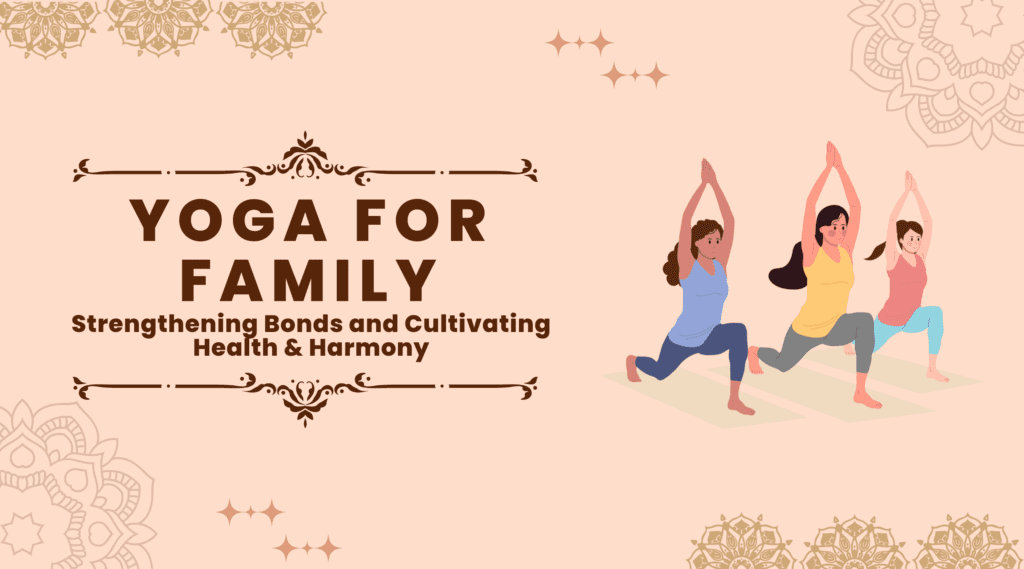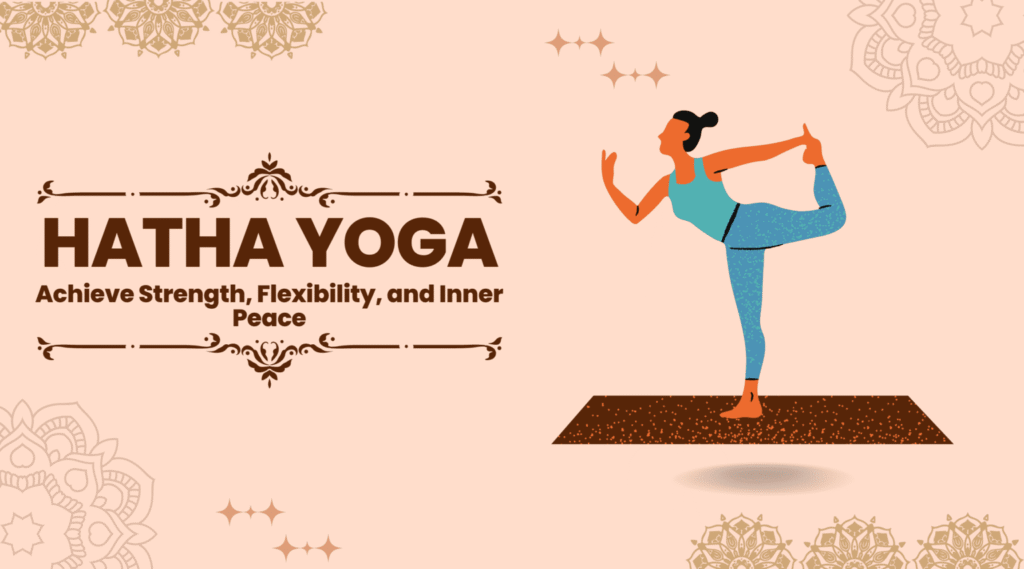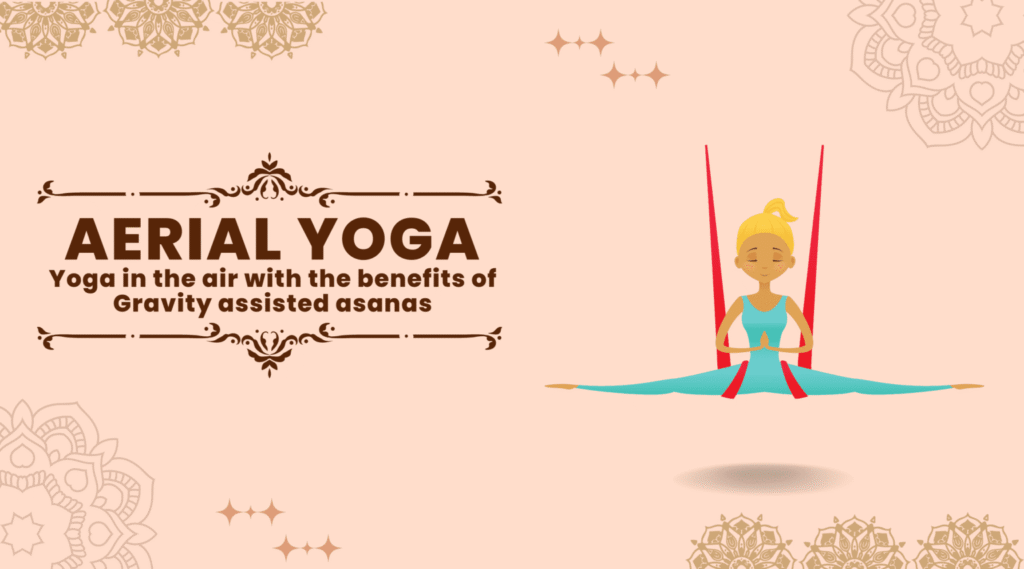
Introduction
Yoga for family is a concept in which we practise yoga with our whole family. Although yoga is a practice that can be enjoyed by individuals of all ages and abilities. However, it is a great idea to make it an ideal activity for a family or families to engage in together.
It is a holistic approach to fitness combining physical poses (asanas) with breath work (pranayama) and meditation to promote relaxation, stress reduction as well as overall wellness.
In today’s fast-paced world, it’s becoming increasingly challenging for families to find quality time to connect and nourish their relationships. With hectic schedules, technological distractions as well as the demands of modern life, it’s quite essential to carve out moments of togetherness and mindfulness. That’s where the transformative practice of yoga for family comes in.
In this blog, we will delve into the enchanting world of family yoga, exploring its benefits and techniques. Also, we will explore how it can become a unifying force for your loved ones.
Whether you’re a parent seeking to foster a deeper connection with your children or a family looking for meaningful activities to engage in together, this guide will introduce you to the wonders of yoga for family and inspire you to embark on a journey of well-being, harmony and joy.
Suggested: Best Yoga Retreats And Yoga Teacher Training In Rishikesh
History of Family Yoga
Originally, the practice of yoga itself dates back thousands of years, originating in ancient India. Initially, yoga was useful as a spiritual discipline aimed at achieving union between body, mind and spirit. Also, its purpose was to cultivate inner harmony, self-awareness, and enlightenment.
Then in the late 19th and early 20th centuries, yoga made its way to the Western world. Spiritual teachers and practitioners from India introduced its teachings to new audiences. As a result yoga gained popularity primarily as a physical exercise system that focused on strength, flexibility, and relaxation.
However, the emergence of family yoga as a distinct practice can be attributed to the desire of parents to share the benefits of yoga with their children and create opportunities for family bonding. In the 1980s and 1990s, pioneering yoga teachers began exploring ways to adapt traditional yoga practices for children and families.
One notable figure in the development of family yoga is Rachel’s Remski, a yoga teacher and author. She focused on adapting yoga practices for children and families. Her book “Family Yoga: A Practical Guide for Parents” published in 1999, offered practical guidance on incorporating yoga into family life, including partner poses, games, and relaxation techniques.
In recent years, family yoga has continued to evolve, adapting to the needs and preferences of diverse families. Today, there are various approaches to family yoga, including parent-child classes, multi-generational classes, and even prenatal and postnatal yoga for expecting and new parents.
The focus is on creating an inclusive and welcoming environment that accommodates families of all sizes and compositions.
Yoga Studios and Family Classes
As the popularity of yoga continued to grow, yoga studios and wellness centres began offering specialised family yoga classes. These classes provided a space where parents and children could come together to practise yoga, fostering connection and creating a supportive community.
Benefits of Yoga for Family
Though the practice of yoga offers numerous benefits for individuals, as a family practice, it becomes an even more enriching and unifying experience. Here are some of the benefits of yoga for families:
1. Physical Well Being
There are various yoga poses (asanas) which promote strength, flexibility as well as balance. Practising yoga together as a family helps improve overall physical fitness and can contribute to better posture, increased energy levels, and enhanced coordination.
2. Stress Relief
Yoga brings about calming as well as stress removing effects. By engaging in yoga as a family, you create a supportive and nurturing environment where everyone can release tension, relax, and cultivate a sense of inner peace. It serves as an excellent tool for managing the daily stresses of life and promoting emotional well-being.
3. Emotional Connection
Family yoga provides an opportunity for family members to connect on a deeper level. Through partner poses, shared experiences, and synchronized movements, family members develop trust, communication, and empathy towards one another. It fosters emotional bonds and strengthens the overall family relationship.
4. Mindfulness and Focus
Yoga emphasizes the practice of mindfulness, which involves being present in the moment and cultivating awareness. By practicing mindfulness together, families can develop better focus, concentration, and the ability to appreciate the present moment. This skill translates into various aspects of life, including academics, work, and relationships.
5. Communication and Cooperation
Family yoga requires coordination and cooperation between family members. Working together to achieve poses, supporting each other’s efforts, and communicating effectively fosters a sense of teamwork and cooperation. These skills learned on the mat can be applied to other areas of family life, promoting better communication and harmony.
6. Improved Sleep
Regular yoga practice has been linked to better sleep quality and quantity. Family yoga sessions before bedtime can create a calming routine. It helps everyone wind down and relax for a good night’s sleep. This can be particularly beneficial for children, promoting healthier sleep patterns and improved overall well-being.
7. Fun and Bonding
Family yoga can be an enjoyable and fun activity for everyone involved. Incorporating games, storytelling and creative sequences makes the practice engaging and entertaining. Sharing laughter, playfulness and joy during yoga sessions creates lasting memories. Apart from that it also strengthens the emotional connection within the family.
8. Healthy Habits and Role Modeling
When children see their parents and older family members engaging in regular physical activity like yoga, they learn the importance of prioritizing their health and well-being. Family yoga encourages the adoption of healthy habits. It also serves as a positive role model for children, promoting a lifelong commitment to wellness.
9. Accessible and Inclusive
Yoga can be adapted to suit any level of fitness or ability, making it an ideal activity for families with varying fitness levels and physical limitations.
How to Incorporate Yoga into Your Family’s Routine
1. Set a Regular Practice Time: Setting a regular time for yoga practice can help make it a consistent part of your family’s routine. This can be in the morning, afternoon, or evening, depending on what works best for your family.
2. Make it Fun: Incorporating playful elements, such as animal poses or partner poses, can make yoga more enjoyable for children and encourage them to participate.
3. Choose Appropriate Poses: Selecting poses that are appropriate for each family member’s fitness level and physical abilities can help ensure a safe and comfortable practice.
4. Use Props: Props such as blocks, straps, and blankets can help make yoga poses more accessible and comfortable for all family members.
5. Practice Mindfulness: Encouraging mindfulness and breath work during yoga practice can help promote relaxation and stress reduction, as well as improve mental focus and concentration.
6. Get Creative: Incorporating themes, music, or visualisations into your family’s yoga practice can make it more engaging and enjoyable.
7. Practice Gratitude: Taking a moment at the end of each yoga practice to express gratitude for each other and the practice itself can help promote positive feelings and a sense of togetherness.
10 Best Family Yoga Poses
Here are 10 popular yoga poses which are accessible as family yoga poses as well as can be enjoyed by the people of all ages:
1. Mountain Pose (Tadasana)
Stand tall with feet together, grounding into the earth. Take the arms overhead while keeping palms facing each other. This pose promotes balance, focus, and grounding.
2. Tree Pose (Vrksasana)
Stand on one leg and place the sole of the other foot on the inner thigh or calf. Bring hands to the heart centre or reach them overhead like branches. This pose develops balance and concentration while encouraging a sense of stability and growth.
3. Downward-Facing Dog (Adho Mukha Svanasana)
Start in a tabletop position, then lift the hips up, forming an inverted V shape. Press hands firmly into the ground and lengthen the spine. This pose strengthens the arms and legs while stretching the whole body.
4. Butterfly Pose (Baddha Konasana)
Sit on the ground and bring the soles of the feet together, allowing the knees to drop out to the sides. Hold onto the feet or ankles and gently flap the legs like butterfly wings. This pose opens the hips and stretches the inner thighs.
5. Child’s Pose (Balasana)
Kneel down and sit on the heels, then fold the torso forward, resting the forehead on the ground. Extend the arms alongside the body or reach them forward. This pose promotes relaxation, release of tension as well as a sense of surrender.
6. Partner Boat Pose
Sit facing each other while keeping knees bent and feet touching. Hold hands and slowly lift the legs, straightening them to create a “V” shape with the bodies. This pose strengthens the core and requires cooperation and balance.
7. Partner Seated Twist
Sit back-to-back with legs crossed. Hold onto each other’s forearms or shoulders and twist gently to one side, then the other. This pose stretches the spine, improves digestion, and promotes a sense of connection.
8. Partner Wheelbarrow Pose
One person gets into a plank position, while the other person holds their legs just above the knees. The person in the plank position walks their hands forward while the partner balances and keeps the legs lifted. This pose builds strength, trust, and teamwork.
9. Partner Downward-Facing Dog
One person comes into Downward-Facing Dog pose, while the other stands behind and holds onto their hips, gently pulling them back. Switch positions and repeat. This pose stretches the hamstrings and calves while promoting communication and support.
10. Savasana (Corpse Pose)
Lie flat on the ground, close your eyes and relax the entire body. Focus on deep breathing while letting go of any tension. This pose promotes deep relaxation, calms the mind, and rejuvenates the body.
These family yoga poses are a great starting point to engage in a shared yoga practice that promotes physical well-being, connection as well as fun. Remember to approach the poses with a sense of playfulness while adapting them to suit the abilities and comfort levels of each family member.
Engaging and Fun Yoga Activities for the Whole Family
Engaging in fun yoga activities as a family not only makes the practice enjoyable but also strengthens the bond among family members. Here are some creative and interactive yoga activities that the whole family can participate in:
1. Partner Poses
Explore partner poses that require cooperation and trust between family members. For example, try “Double Down Dog” by standing facing each other and placing your hands on the ground. Then, lift one leg and connect the soles of your feet, creating a stable base while maintaining balance and communication.
2. Animal Yoga
Choose various animal poses and create a sequence of movements inspired by their characteristics. For instance, practice “Cat and Cow” poses, imitate the crawling of a “Downward-Facing Dog,” or hop like a frog in “Frog Pose.” Encourage creativity and make animal sounds to make it even more fun.
3. Yoga Storytelling
Create a story where each family member contributes a pose or movement to the narrative. Sit in a circle and take turns adding to the story while acting out the poses. This activity stimulates imagination, encourages active listening, and allows everyone to contribute to a shared experience.
4. Yoga Freeze Dance
Play some lively music and have a dance party with a twist. When the music stops, everyone freezes in a yoga pose of their choice. Hold the pose until the music starts again. This activity combines movement, coordination, and creativity, making it an exciting and energetic yoga game.
5. Yoga Obstacle Course
Set up a yoga-themed obstacle course in your living room or backyard. Include stations with different yoga poses or challenges. For example, create a “Tree Pose Station” where everyone must balance on one leg or a “Bridge Pose Station” where they need to lift their hips off the ground. Time each family member as they complete the course and cheer each other on.
6. Family Yoga Challenges
Introduce friendly competitions and challenges into your family yoga sessions. Such as you can have “Longest Balance Challenge” to see who can hold a balancing pose the longest, or “Strongest Warrior Challenge” to test strength and endurance. These challenges encourage support and motivation within the family while adding an element of excitement.
7. Yoga Picnic
Take your yoga practice outdoors and have a yoga picnic. Lay out yoga mats or blankets in a serene location and practise a gentle yoga sequence together. Afterward, enjoy healthy snacks or a picnic meal, fostering a sense of relaxation and togetherness.
Remember, the key is to have fun, be creative, and adapt the activities to suit the ages and abilities of all family members. These engaging yoga activities will not only strengthen your family bond but also promote physical fitness, creativity, and mindfulness within the family unit.
Expectation from family yoga class
In a Family yoga class, we can expect a fun & rewarding experience as well as a wonderful opportunity to spend quality time with loved ones while promoting physical and mental health through the practice of yoga.
The instructor will typically create a safe and supportive environment where everyone feels comfortable to participate apart from that the instructor may offer modifications or variations to make poses more accessible or challenging, depending on the individual needs of family members.
We can also expect partner poses that can be a fun and engaging way to practise yoga with family members. In a family yoga class, partner poses may be incorporated to encourage cooperation, communication, and connection between family members. These are the general things that we can expect in a family yoga class.
Conclusion
Yoga for family is a wonderful practice that offers numerous benefits for both individuals and the collective unit. Engaging in yoga as a family creates opportunities for connection, fun, and overall well-being. Through partner poses, creative activities, and a shared sense of presence, family members can strengthen their emotional bonds, improve physical fitness as well as cultivate mindfulness.
By practising yoga together, families can create a supportive and nurturing environment that promotes open communication, cooperation and trust. The shared experiences on the mat translate into a deeper understanding and appreciation for one another off the mat. Family yoga also serves as a positive example for children, instilling healthy habits and promoting a lifelong commitment to wellness.
So, gather your loved ones, roll out your yoga mats, and embark on a journey of togetherness, growth, and joy through family yoga. Also, discover the transformative power of this practice as you build stronger connections, create lasting memories, and nurture a harmonious and balanced family dynamic. Embrace the magic of family yoga and enjoy the incredible benefits it brings to your lives.
You Can Also Read:


